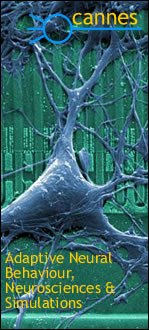|
Research |
Simulation SystemsCANNES laboratory, in conjunction with the Brain Lab at the University of Southern California are developing tools, NSL/ASL, for the simulation of distributed and hierarchical neural networks. This goes in hand with research in diverse related areas, such as visualization, robotics and modeling methodologies (Computer-Aided Neural Networks Engineering Systems - CANNES). Databases and SimulationDatabases supporting simulation systems are a related aspect currently developed as part of HBP (Human Brain Project) at the University of Southern California in order to offer access to distributed experimental data. Among the issues being addressed are the development of models for multi-media data (e.g., structured text describing experimental protocols; time series from neurophysiological recordings; and 2D and 3D anatomical data); how to match data from brain slices to "standard slices" in an electronic atlas of neuroanatomy; integration of visualization with database construction and retrieval; and the merging of simulation tools and database tools into an integrated environment which (a) lets experimenters learn of well-substantiated predictions ready for testing, (b) links model assumptions to supporting empirical data, and (c) provides tools to test models against available data, and develop versions of extra models which better meet new data as they become available. To tie neural modeling with the database project, we dwell on the issue of "conceptual modeling", and the way in which it will provide part of the integrative thrust for the whole project. The issue is this: a given body of data can be seen either as an uninterpreted array of bits, or as a highly structured set of records, with explicit representation of relations between these records, some of which may be at different levels of hierarchical detail. The problem is to find the appropriate concepts with which to structure a given set of data, balancing off the costs of structuring data with the costs of trying to answer questions using terminology which is not well related to the structure of the database. Briefly, conceptual modeling will be applied to the data gathering process in the project and will guide the design of appropriate data structures for the simulation tools. The project Multi-Level Modeling in Neural Networks: A Computational and Experimental Approach, has as an important component in the extension of NSL to provide a multi-level methodology for linking simulations and databases to facilitate the construction, testing, and validation of complex neural systems. |
